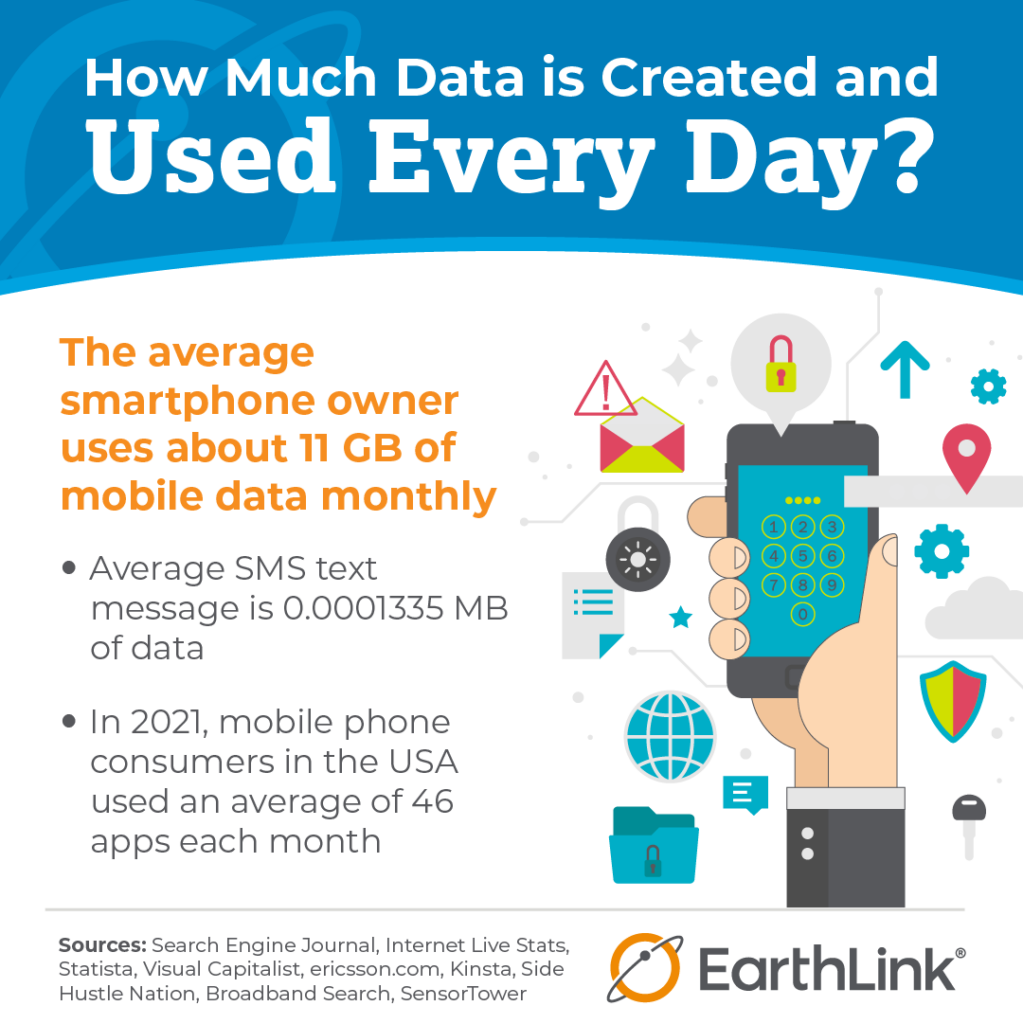How Much Data is Created and Used Every Day?
Short answer: a lot. And Big Tech is collecting more of it all day, every day. Those 3.5 million emails per second feel really real (especially when you’re coming back from a week off). But to take a deeper look at all these bytes and bits flowing, we broke down some fascinating numbers to help you keep count:

Wow! And, we expect that mobile phones will continue to grow as the main way people access the internet. Just think: do you usually look something up or make a purchase on your phone, or do you tend to wait until you’re near a laptop, tablet, or desktop?

Phones sure have come a long way since the days of just being used to call and text.

If you’re on a limited data plan, you might be worried about how much data you’re using to power those streaming apps.

Then again, if you are trying to cut back on your data usage, here’s what you can expect from some of the most popular apps and activities. Now let’s look at how we use the internet overall, not just on our phones.

Google is definitely a big gateway to the web. Between maps, shopping, news, images, and just plain web search, it seems like there’s no area they don’t touch. Google even contributes to all those emails being sent through Gmail!

We love binging Netflix as much as the next person, but 2.2 million minutes is more than 36,000 hours. In other words, that’s more than four years of content! That even makes watching every season of Grey’s Anatomy sound like a breeze.
If you love the internet as much as we do, you deserve the speed that’s right for you and a signal that’s reliable. Get EarthLink Fiber Internet. With speeds up to 5 Gigs, no data caps, and predictable billing, there’s virtually no limit to what you can do. Call one of our Internet Experts today at 8666180264 or find your plan online.